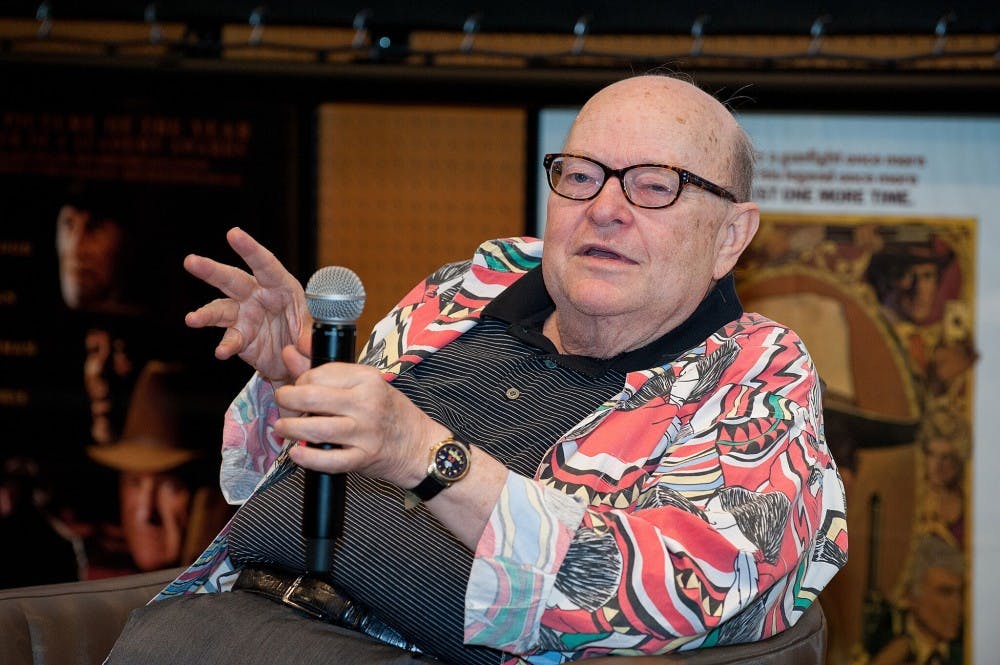The largest private collection of Western film items has been acquired by ASU and Scottsdale Museum of the West, a partnership ASU hopes will further develop its film and media studies program.
English and film and media studies professor Peter Lehman serves as the director of the Center for Film, Media and Popular Culture, and is conducting research behind the Rennard Strickland collection.
ASU selected Lehman because of his extensive research on John Ford, a major American film maker and director of Western films. Some may know the Western genre as the ‘Cowboy and Indian movies.’
“Since ASU and the Scottsdale Museum of the West partnered on this collection, something of an unusual but exciting collaboration, it makes an exciting opportunity for a research university and an art museum,” Lehman said. “The university has opportunities to work with some of the people at the museum on ways to maximize the use of this collection.”
From early cinema to recent films, the Rennard Strickland collection has 5,000 different items including posters and lobby cards.
Lehman said the early cinema, or silent films, are a very important part of the collection. The actual film may have been lost, but students and scholars can still learn about this period of cinema from looking at the posters and lobby cards.
“In many cases, they are very rare and seeing those posters, the originals of those posters, is very important for people to learn about how films were marketed the time they were released,” Lehman said.
Usually, these Western films are set in Western America after the Civil War and typically the later part of the 19th century. But, not all of the movies in this collection were filmed in the United States.
“The most famous examples are Sergio Leone, an Italian filmmaker who made Westerns with Clint Eastwood,” Lehman said. “Clint Eastwood became famous as a movie actor in a series of Italian westerns, or called Spaghetti Westerns at the time of their release.”
Lehman’s favorites, of what he has seen of the collection, involve his personal research of John Ford: a poster of "Searchers" from France and a rare poster of "Stagecoach."
The partnership between ASU and Scottsdale Museum of the West exists because universities don't have places to exhibit the work like a museum would, but they do have expertise about the films and American Indian Studies, Lehman said.
Desiree Garcia, director of film and media studies, wants to involve students with this assortment.
“There may be internships involved at the Museum of the West,” Garcia said. “That would be internships that would put students into contact with the collection itself. That includes cataloguing, arranging, coming up with ideas on how to display the posters and the other elements of the collection as well.”
Garcia also said the students can be involved with writing about some of the posters, films and the marketing materials that come with it.
Robert Spindler, the head archivist at ASU, is also interested in the jointly acquired Strickland collection.
“Native American historians, people interested in the history of Native American culture, are one group of scholars that can use this collection to help understand how Native Americans were depicted in our media,” Spindler said.
He said the way Native Americans are depicted in the posters, the films, the costumes and the set design can all provide information about how Hollywood and its producers viewed Native Americans.
“You can also do some work in this collection with how those perceptions of Native Americans changed over time, by looking at how they were depicted in the posters and titles of films and the stars that were selected,” Spindler said. “They’re really a wonderful resource for what I would describe the starting point in historical research around Native American cultures.”
Mike Fox, director and CEO of Scottsdale Museum of the West, presented this collection to Michael Crow and other scholars of the university four years ago.
“(The museum) began having a discussion with Dr. Crow, thinking that such a collection would be an extraordinary opportunity and responsibility for our two institution here in this state,” Fox said.
The collection involves nearly 50 years of film items with over 30 countries and various languages. Because it has 5,000 pieces, readying these pieces for the public won’t happen overnight.
“It’s going to be a never ending process of fully appreciating the collection and making use of it,” Fox said. “The first opportunity for the public to view a portion of the collection will begin in the summer of 2017. That will be an opportunity for us to present it to the community, and the state, and the region, the beauty, and the strength and the significance of this collection.”
Fox said this national treasure was a great responsibility for both institutions, the museum and the university to have for present and future generations.
"I can't overstate the fact that the collection is one of a kind," Fox said. "Nothing of its kind could ever again be amassed. I hope users of the collection, from faculty and students at the university, to curators and exhibitors here at the museum will appreciate it for its artistic, sociological and historical value."
Reach the reporter at anbuechl@asu.edu or follow @alexa_buechler on Twitter.
Like The State Press on Facebook and follow @statepress on Twitter.




